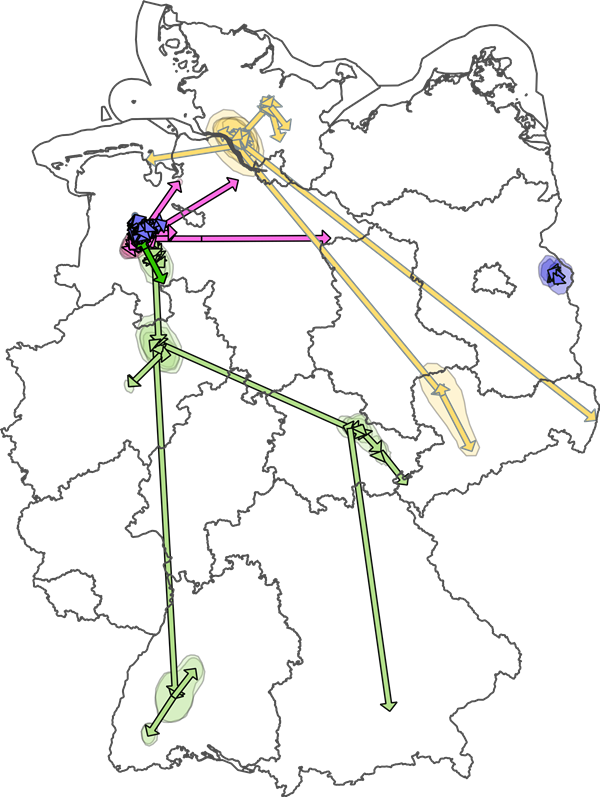During autumn/winter in 2016 – 2017 and 2020 – 2021, highly pathogenic avian influenza viruses (HPAIV) caused severe outbreaks in Germany and Europe. Multiple clade 2.3.4.4b H5 HPAI subtypes were responsible for increased mortality in wild birds and high mortality and massive losses in the poultry sector. To clarify putative entry sources and delineate interconnections between outbreaks in poultry holdings and wild birds, we applied whole-genome sequencing and phylodynamic analyses combined with the results of epidemiological outbreak investigations. Varying outbreak dynamics of the distinct reassortants allowed for the identification of individual, putatively wild bird-mediated entries into backyard holdings, several clusters comprising poultry holdings, local virus circulation for several weeks, direct farm-to-farm transmission and potential reassortment within a turkey holding with subsequent spill-over of the novel reassorted virus into the wild bird population. Whole-genome sequencing allowed for allowed for a unique high-resolution molecular epidemiology analysis of HPAIV H5Nx outbreaks, recommended to be used as a standard tool. The presented detailed account of the genetic, temporal and geographical characteristics of the recent German HPAI H5Nx situation emphasizes the role of poultry holdings as an important source of novel genetic variants and reassortants.

